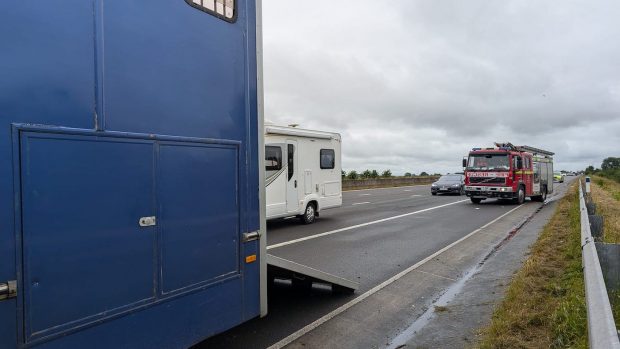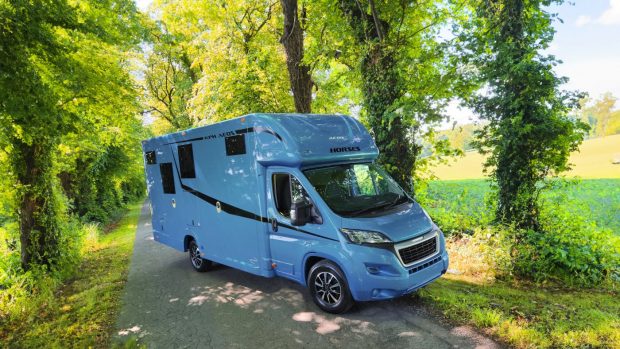You are on your way home from a show when suddenly your horse transport breaks down. What should you do? Don’t panic. Follow our useful tips to avoid making this unfortunate situation more of a drama than it needs to be.
1. Stop
If possible, try to get your vehicle to a safe place. This would mean the hard shoulder on a motorway, as close to the left-hand verge as is possible. On smaller roads, a verge or gateway would suffice, away from any bends or blind summits.
2. Warn others
Switch on your hazard warning lights. Place a hazard triangle or flashing lamp on the side of the road, 50-100m behind the vehicle. If you are parked on the road close to a bend, someone should warn oncoming traffic before the bend. In poor visibility, or darkness, leave the sidelights on.
3. Personal and passenger safety
Anyone on the road is potentially in danger from other vehicles. Where possible, the police suggest drivers should stay outside the car on the nearest verge. On no account should doors on the same side as the road be utilised. Be aware of your own safety and wear bright or reflective clothing if you have any.
4. Unloading horses
This should never be done without the police present – this applies to country lanes, as well as motorways. Although you may be concerned about your horse’s welfare, think of the consequences if your horse breaks free. Talk to your horse to calm him, or call a local vet and have the animal sedated if necessary.
5. Be prepared
Before you begin any journey with horses, check you have the following useful items:
- A mobile phone
- A warning triangle or flashing light
- Jump leads
- Torch
- Warm jacket
- Reflective riding tabard
- Membership details for your breakdown and recovery company
- Your vet’s number, should you need advice.




